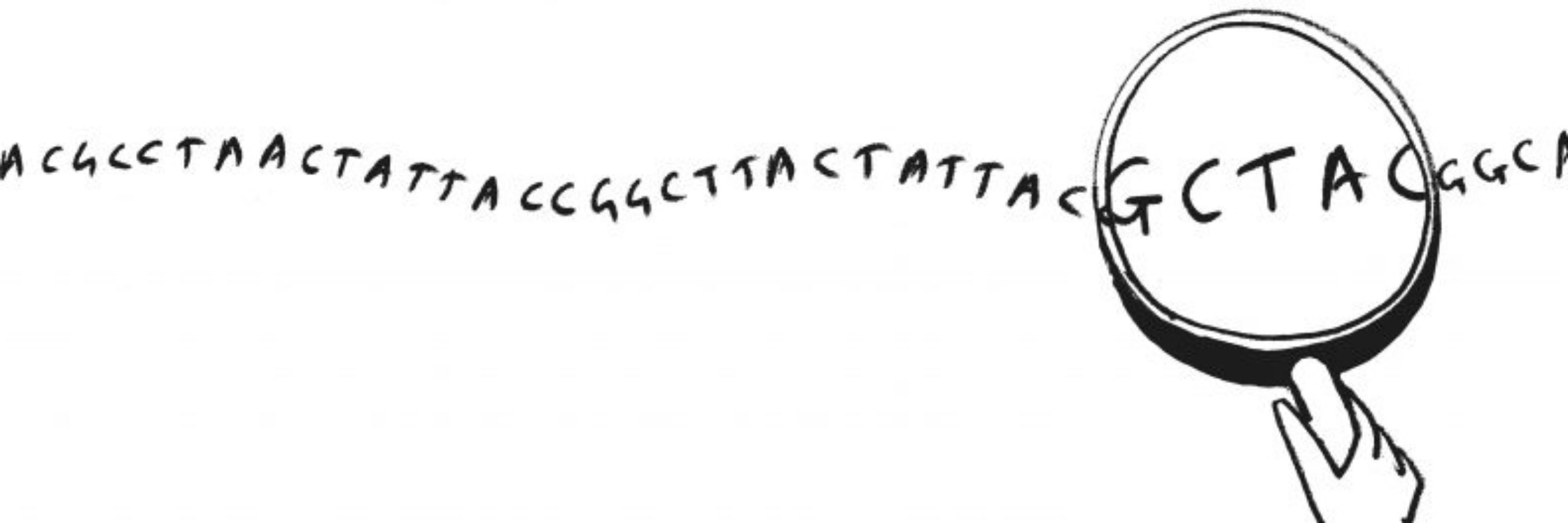
Tiffany Taylor
@taylorlabgroup.bsky.social
Professor of Microbial Ecology and Evolution at the Life Sciences Department at the University of Bath. Royal Society Dorothy Hodgkin Research Fellow. Children's author evolution/genetics. Mum.
https://tiffanybtaylor.wordpress.com/
https://tiffanybtaylor.wordpress.com/
September 4, 2025 at 12:09 PM
Dammit. Edit to first post, T > G.
August 13, 2025 at 5:47 PM
Dammit. Edit to first post, T > G.
A big thank you to my co-authors: Joshua Cherry, @gretelwaugh.bsky.social Also thank you to @peteralind.bsky.social for his helpful feedback on the manuscript and for pointing out that GnT motifs bias experimental evolution surprisingly often!
August 13, 2025 at 4:37 PM
A big thank you to my co-authors: Joshua Cherry, @gretelwaugh.bsky.social Also thank you to @peteralind.bsky.social for his helpful feedback on the manuscript and for pointing out that GnT motifs bias experimental evolution surprisingly often!
Finally, the GnT motif mutation rates determined for Pseudomonas closely match those determined for Salmonella, so we're confident that our calculated rates for GnT motifs can be used to both find and quantify T:A→G:C mutation hotspots in many other species of bacteria. (8/8)

August 13, 2025 at 4:37 PM
Finally, the GnT motif mutation rates determined for Pseudomonas closely match those determined for Salmonella, so we're confident that our calculated rates for GnT motifs can be used to both find and quantify T:A→G:C mutation hotspots in many other species of bacteria. (8/8)
GnT motifs are very short (≥8bp depending on G tract length), which means these hotspots are very common elements in bacterial genomes! For example, Pseudomonas fluorescens has hotspot GnT motifs that can cause a non-synonymous mutation in ~20% of reading frames. (7/8)

August 13, 2025 at 4:37 PM
GnT motifs are very short (≥8bp depending on G tract length), which means these hotspots are very common elements in bacterial genomes! For example, Pseudomonas fluorescens has hotspot GnT motifs that can cause a non-synonymous mutation in ~20% of reading frames. (7/8)
We also demonstrated that GnT motifs can be used to increase the rate and predictability of evolution. If you synonymously convert the neighbouring nucleotides around adaptive T:A positions into GnT motifs, adaptive evolution can happen significantly faster. (6/8)

August 13, 2025 at 4:37 PM
We also demonstrated that GnT motifs can be used to increase the rate and predictability of evolution. If you synonymously convert the neighbouring nucleotides around adaptive T:A positions into GnT motifs, adaptive evolution can happen significantly faster. (6/8)
For example, if a G4T sequence (i.e. GGGGT) is flanked by a 5’ AC and a 3’ A, there’s almost no hotspot (the T:A→G:C mutation rate is ~5-fold higher than baseline). But if a G4T sequence is flanked by a 5’ GA and 3’ C, the T:A→G:C rate is ∼1100-fold higher than baseline. (5/8)

August 13, 2025 at 4:37 PM
For example, if a G4T sequence (i.e. GGGGT) is flanked by a 5’ AC and a 3’ A, there’s almost no hotspot (the T:A→G:C mutation rate is ~5-fold higher than baseline). But if a G4T sequence is flanked by a 5’ GA and 3’ C, the T:A→G:C rate is ∼1100-fold higher than baseline. (5/8)
We created T:A→G:C mutational hotspots by synonymously altering: (a) the length of the GnT sequence, (b) the dinucleotide 5’ to the homopolymer G tract, and (c) the nucleotide 3’ to the T. Together, the flanking nucleotides change the mutation rate by orders of magnitude. (4/8)
August 13, 2025 at 4:37 PM
We created T:A→G:C mutational hotspots by synonymously altering: (a) the length of the GnT sequence, (b) the dinucleotide 5’ to the homopolymer G tract, and (c) the nucleotide 3’ to the T. Together, the flanking nucleotides change the mutation rate by orders of magnitude. (4/8)
In this work, we create mutational hotspots in the Pseudomonas fluorescens genome using synonymous nucleotide changes to alter the GnT sequence and its neighbours. We show that GnT hotspots are determined by a GnT sequence and the nucleotides immediately flanking it. (3/8)

August 13, 2025 at 4:37 PM
In this work, we create mutational hotspots in the Pseudomonas fluorescens genome using synonymous nucleotide changes to alter the GnT sequence and its neighbours. We show that GnT hotspots are determined by a GnT sequence and the nucleotides immediately flanking it. (3/8)
In a recent paper analysing Salmonella and others, Cherry 2023 found that homopolymeric tracts of G (≥3) with a 3’ T frequently mutate so that the T is substituted with another G: I.e. GGGT→GGGG. This rate increases the longer the G tract (GnT). academic.oup.com/gbe/article/... (2/8)

T Residues Preceded by Runs of G Are Hotspots of T→G Mutation in Bacteria
Abstract. The rate of mutation varies among positions in a genome. Local sequence context can affect the rate and has different effects on different types
academic.oup.com
August 13, 2025 at 4:37 PM
In a recent paper analysing Salmonella and others, Cherry 2023 found that homopolymeric tracts of G (≥3) with a 3’ T frequently mutate so that the T is substituted with another G: I.e. GGGT→GGGG. This rate increases the longer the G tract (GnT). academic.oup.com/gbe/article/... (2/8)
Our latest paper is now out in @molbioevol.bsky.social! In this work we show that T:A→G:C mutational hotspots in bacteria are created by short nucleotide sequences (≥8bp), which we call GnT motifs. academic.oup.com/mbe/article/...
A 🧵from James (not on Bluesky) 1/8
#microsky
A 🧵from James (not on Bluesky) 1/8
#microsky

GnT Motifs Can Increase T:A→G:C Mutation Rates Over 1000-fold in Bacteria
Abstract. Nucleotides across a genome do not mutate at equal frequencies. Instead, specific nucleotide positions can exhibit much higher mutation rates tha
academic.oup.com
August 13, 2025 at 4:37 PM
Our latest paper is now out in @molbioevol.bsky.social! In this work we show that T:A→G:C mutational hotspots in bacteria are created by short nucleotide sequences (≥8bp), which we call GnT motifs. academic.oup.com/mbe/article/...
A 🧵from James (not on Bluesky) 1/8
#microsky
A 🧵from James (not on Bluesky) 1/8
#microsky

